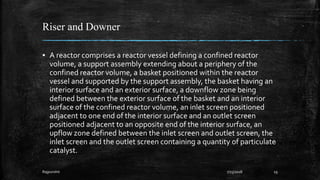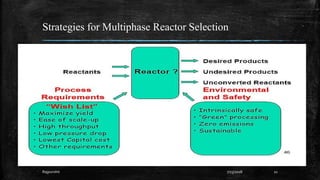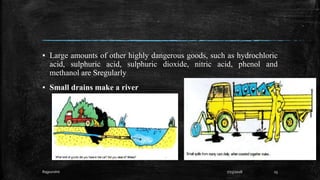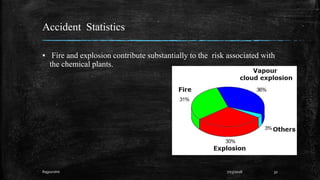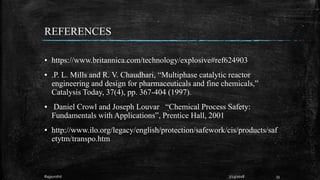This document discusses fire and explosions from both mechanical and chemical perspectives. It begins with an introduction to the three main types of explosions: mechanical, nuclear, and chemical. It then focuses on mechanical explosions, describing them as physical processes caused by a buildup of pressure, like in a boiler. Next, it covers chemical explosions in depth, defining the characteristics of explosives, discussing different types of chemical reactions that can cause explosions, and providing examples. It also addresses multiphase reactions and transport effects that are important to explosions.
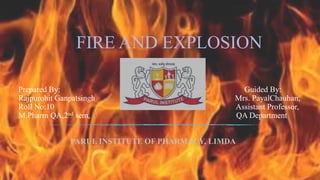
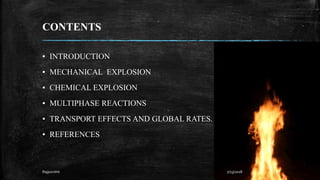
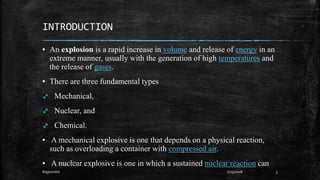


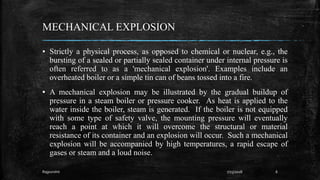
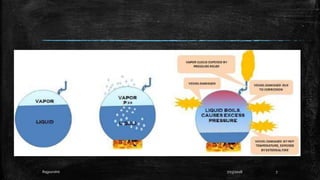

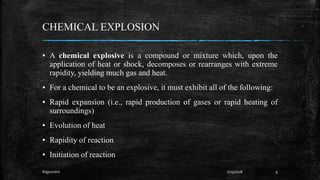


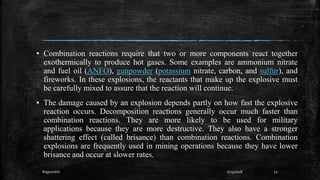
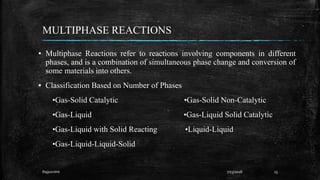


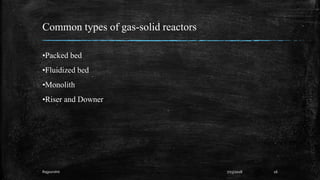
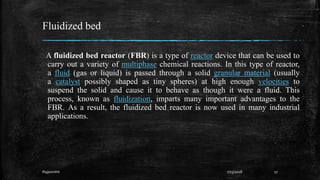
![Basic principles
▪ The solid substrate (the catalytic material upon which chemical species react)
material in the fluidized bed reactor is typically supported by a porous plate,
known as a distributor.[1] The fluid is then forced through the distributor up
through the solid material. At lower fluid velocities, the solids remain in place
as the fluid passes through the voids in the material. This is known as a packed
bed reactor. As the fluid velocity is increased, the reactor will reach a stage
where the force of the fluid on the solids is enough to balance the weight of the
solid material. This stage is known as incipient fluidization and occurs at this
minimum fluidization velocity. Once this minimum velocity is surpassed, the
contents of the reactor bed begin to expand and swirl around much like an
agitated tank or boiling pot of water. The reactor is now a fluidized bed.
Depending on the operating conditions and properties of solid phase various
flow regimes can be observed in this reactor.
187/23/2018Rajpurohit](https://image.slidesharecdn.com/fireandexplosion-180723171005/85/Fire-and-explosion-18-320.jpg)
